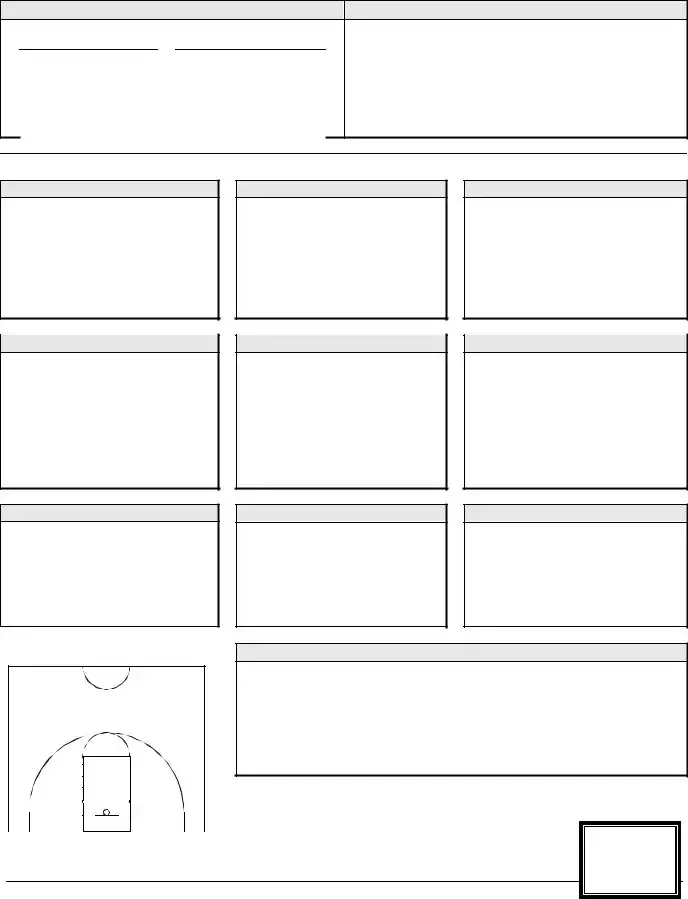What is the Basketball Evaluation form used for?
The Basketball Evaluation form is designed to assess a player’s skills and overall performance in basketball. Coaches and evaluators use it to provide structured feedback, helping players understand their strengths and areas where improvement is necessary. The information gathered is essential for guiding training practices and development strategies.
What information is required on the form?
Important player information includes the player’s first name, last name, date of birth, grade, height, and weight. This data allows for a better understanding of the player’s background and physical attributes, which can influence their performance on the court.
How are players evaluated in different skill categories?
Players are rated on a scale from 1 to 5 across various skills including shooting, dribbling, defense, rebounding, passing, athletic ability, and overall game play. Each skill has specific criteria for evaluation, allowing a comprehensive overview of the player's abilities. A score of 1 indicates the need for improvement, while a score of 5 represents outstanding proficiency.
Are there specific areas of focus within each skill category?
Yes, each skill category has specific components that evaluators consider. For example, within shooting, evaluators look at lay-ups, mechanics, shooting off the dribble, and catch-and-shoot abilities. Similarly, in defense, they assess defensive stance, ball handling, and recovery skills. This detailed approach ensures that every aspect of a player's performance is examined.
What do the symbols “O” and “X” signify?
An "O" is used to indicate where a player would be most successful on offense, while an "X" marks where they excel defensively. This visual representation helps coaches quickly identify a player’s strengths in different game scenarios, making strategic decisions easier.
How does the evaluation influence a player's development?
Feedback from the evaluation provides players with actionable insights into their game. By identifying both strengths and weaknesses, players can tailor their practice and focus specific efforts on skill development. Coaches may also use this information to allocate playing time and roles during games based on individual skills.
What happens if a player receives a low score in a category?
A low score in any category serves as a flag for potential areas needing improvement. Coaches and the players should discuss the feedback to create a targeted improvement plan. Support can come in various forms, including additional training or working with peers to build skills in the evaluated category.
Is there a space for comments or recommendations?
Yes, the form includes a section for comments and recommendations. This area allows evaluators to provide more personalized feedback, such as suggesting specific drills or strategies for improvement, highlighting what a player excels at, or noting their potential fit in a team or role.
Who typically completes the Basketball Evaluation form?
Coaches, trainers, or evaluators familiar with the player's gameplay usually complete the Basketball Evaluation form. Their insights carry weight as they observe players during practices and games, ensuring that the feedback is relevant and constructive.
Can the evaluation be used for purposes other than player development?
Absolutely. While the primary focus is player improvement, the evaluations can also aid in team selection, talent identification, or recruitment processes. They allow organizations to assess the skills present in their player pool and plan accordingly, whether it’s for training groups, tournaments, or future seasons.

